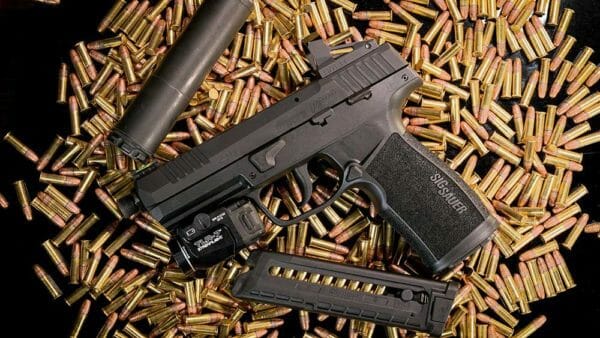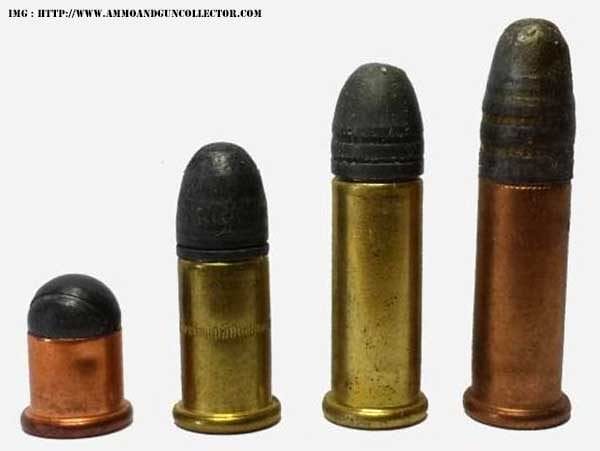[ad_1]


The .22 Lengthy Rifle cartridge is the most well-liked cartridge in existence. Yearly, billions of .22 LR cartridges are bought and shot. It’s in style for each goal capturing and looking and is utilized by many for self-defense. It has been utilized by the army institutions of most international locations, largely as a coaching spherical but additionally in fight. The .22 LR has been used to kill most animals, from the smallest, together with some bugs, as much as elephants.
The .22 Lengthy Rifle is derived from the .22 Brief cartridge; each are rimfire cartridges that use a heeled bullet that’s lubricated on the surface. The .22 Brief was launched by Smith & Wesson in 1857. The .22 Brief was for his or her first cartridge revolver, the #1, a seven-shot backside break revolver. The .22 Brief, derived from the .22 BB cap, is a primer-powered cartridge that shot a spherical ball and was added to what had been a percussion cap, was launched in 1845. The Brief used a 29-grain pullet and 4 grains of wonderful black powder. The .22 Lengthy used an extended case, 5 grains of black powder, and the 29-grain bullet. It was launched in 1871.
All 4 cartridges, the BB cap, the Brief, the Lengthy, and the Lengthy Rifle, survive and may be bought in the present day.


A fifth cartridge, the .22 Further Lengthy, contained six grains of wonderful black powder and used a 40-grain bullet. It was launched in 1880. It loved business success for a couple of years. The Lengthy Rifle used a 40-grain bullet from the Further Lengthy Rifle, the lengthened case of the Lengthy, and 5 grains of wonderful black energy. It was launched in 1887 by the Stevens Arms firm for his or her single-shot pistols and rifles. It was an immediate success, extra correct than the Brief, extra highly effective than the Lengthy, and as highly effective because the Further Lengthy in a extra compact and cheaper package deal. The Lengthy Rifle is alleged to be considerably extra correct than the Further Lengthy.
The Stevens Arms Firm was a premium model in 1887. Its rifles and pistols have been extremely considered and utilized in many competitions. The .22 Lengthy Rifle was developed by Stevens from 1886 to 1887. It was fast to leap the Atlantic and discover favor in England, the place capturing was a preferred sport, typically practiced inside homes. These of you who learn Arthur Conan Doyle’s Sherlock Holmes collection could recall that Sherlock Properties typically practices capturing a revolver in his rooms at 221b Baker St.
On February 7, 1889, Taking pictures and Fishing, an English publication, furnished a prolonged and thorough evaluation of the brand new .22 Lengthy Rifle cartridges. The article provides us a window to see what the primary .22 LR cartridges might do. They have been produced by the Union Metallic Cartridge Firm. From the 1889 article:
It’s the unanimous opinion of each rifleman who has shot the lengthy rifle cartridge, that it’s definitely essentially the most correct rim-fire .22-calibre cartridge which has but been produced. The cost of powder on this cartridge is 5 grains of powder and a bullet weighing 40 grains. The cost is properly proportioned, which contributes a lot to the accuracy.
There’s additionally one other level which makes the bullet a real flyer, which is it’s uncrimped within the shell. The author witnessed some very wonderful capturing performed with the strange quick cartridges when uncrimped, and feels this can be a essential issue in direction of making this cartridge an unusually correct one, however whereas it contributes to the accuracy, it’s to a sure extent objectionable, because it forbids the removing of the cartridge from the chamber of the rifle with out leaving the bullet within the rifle. This causes the powder to spill from the shell and prevents using the cartridge in a repeater.
A hobbyist discovered some outdated UMC black powder Lengthy Rifle masses with copper instances, the place the bullets have been heeled however not crimped. This confirms the early cartridges weren’t crimped.
A crimp was added to the cartridge relatively rapidly. It’s extra vital when utilized in repeaters than in single-shot pistols and rifles.
Two totally different sources, American Rifleman and John Walters, give the rate of the black powder .22 Lengthy Rifle with a 40-grain bullet at 1095 fps and 1103 fps, an inconsequential distinction of 8 fps. Smokeless powder Remington Commonplace Velocity ammunition, manufactured about 1956, produced a median velocity of 1099 fps, precisely in the course of the above. It was possible designed to duplicate the black powder load. The common teams for the 1956 Remington, adjusted to 40 yards, have been .904 inches.
A take a look at of latest CCI Commonplace Velocity ammunition from a inventory Rossi RS22 rifle two years in the past, gave common 5 shot teams of .502 inches at 25 yards, extrapolated to .802 inches at 40 yards. The CCI 40-grain Lengthy Rifle was examined at 1073 fps.
The black powder .22 Lengthy Rifle load efficiency is duplicated by fashionable smokeless powder, non-corrosive primed, Commonplace Velocity ammunition.
In the present day, 40-grain Lengthy Rifle cartridges can ship velocities of 1400 toes per second or are loaded all the way down to 700 toes per second for lowered sound and vary. This might not be performed with black powder as a result of the powder has to fill the case, ideally a bit compressed, to offer constant ignition. Black powder cartridges usually had just one load. Adjustable sights have been far much less widespread. Stevens rifles and pistols have been recognized for goal capturing. A lot of them had state-of-the-art iron sights from the interval. With one of the best iron sights, teams may be obtained, in addition to with a low magnification scope, though the iron sights want good lighting situations for high efficiency.
The .22 Lengthy Rifle cartridge has seen enchancment through the years, with smokeless powder, non-corrosive priming, and a higher number of masses. The essential efficiency could be very near the unique 1887 Lengthy Rifle cartridge launched and promoted by the Stevens Arms Firm.
Dwell Stock Value Checker
About Dean Weingarten:
Dean Weingarten has been a peace officer, a army officer, was on the College of Wisconsin Pistol Group for 4 years, and was first licensed to show firearms security in 1973. He taught the Arizona hid carry course for fifteen years till the aim of Constitutional Carry was attained. He has levels in meteorology and mining engineering, and retired from the Division of Protection after a 30 yr profession in Military Analysis, Growth, Testing, and Analysis.

[ad_2]
Source link




